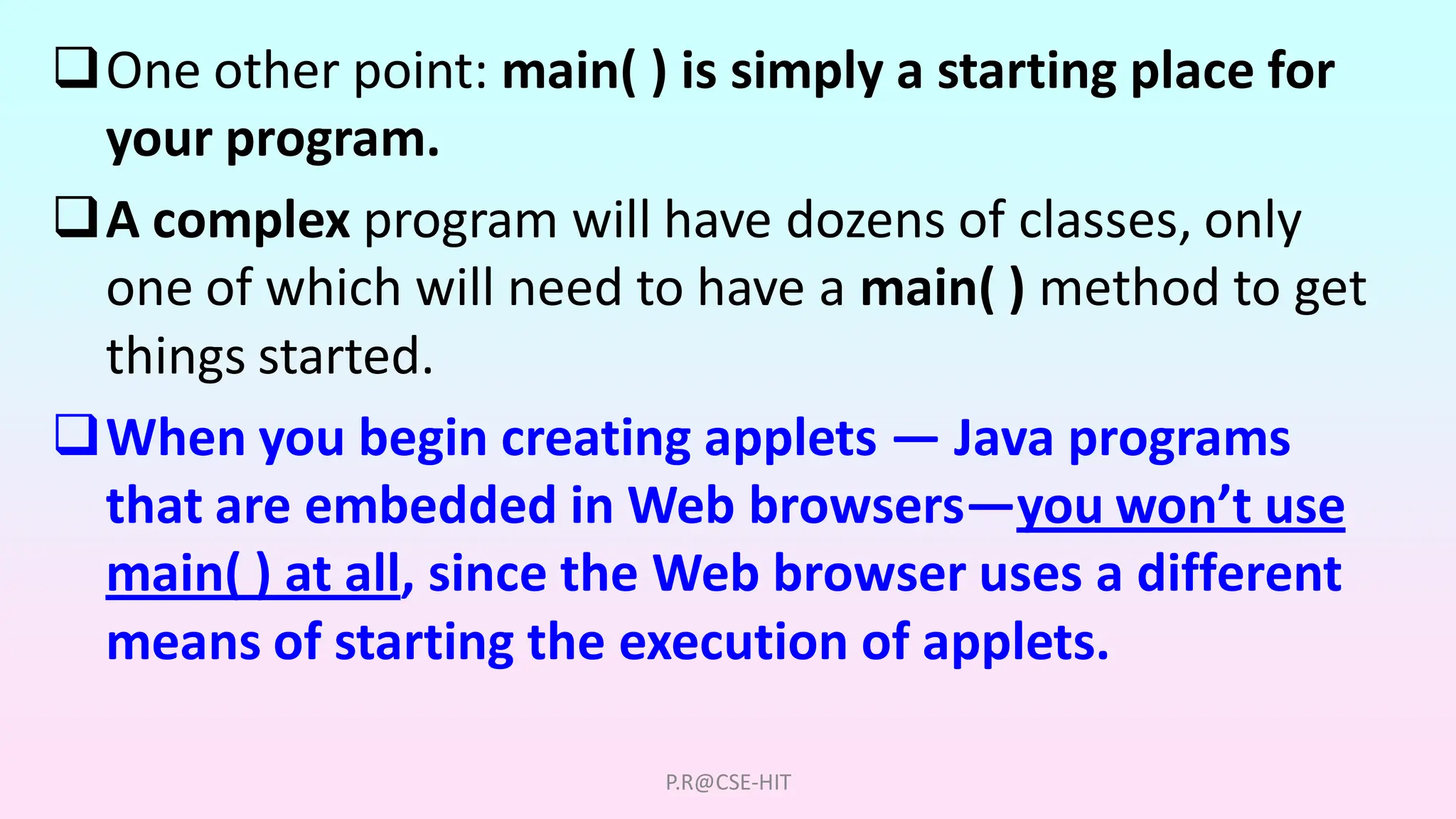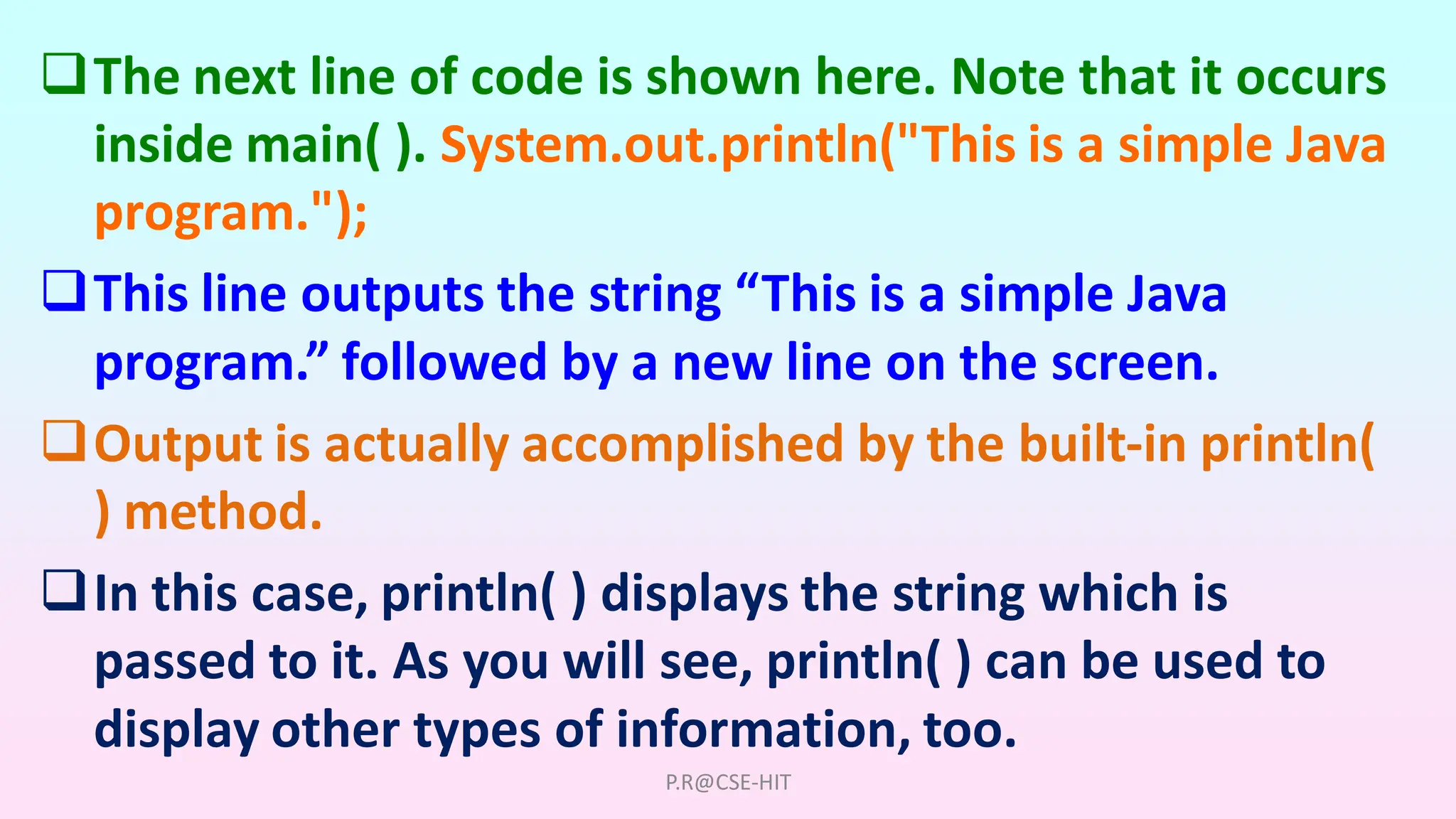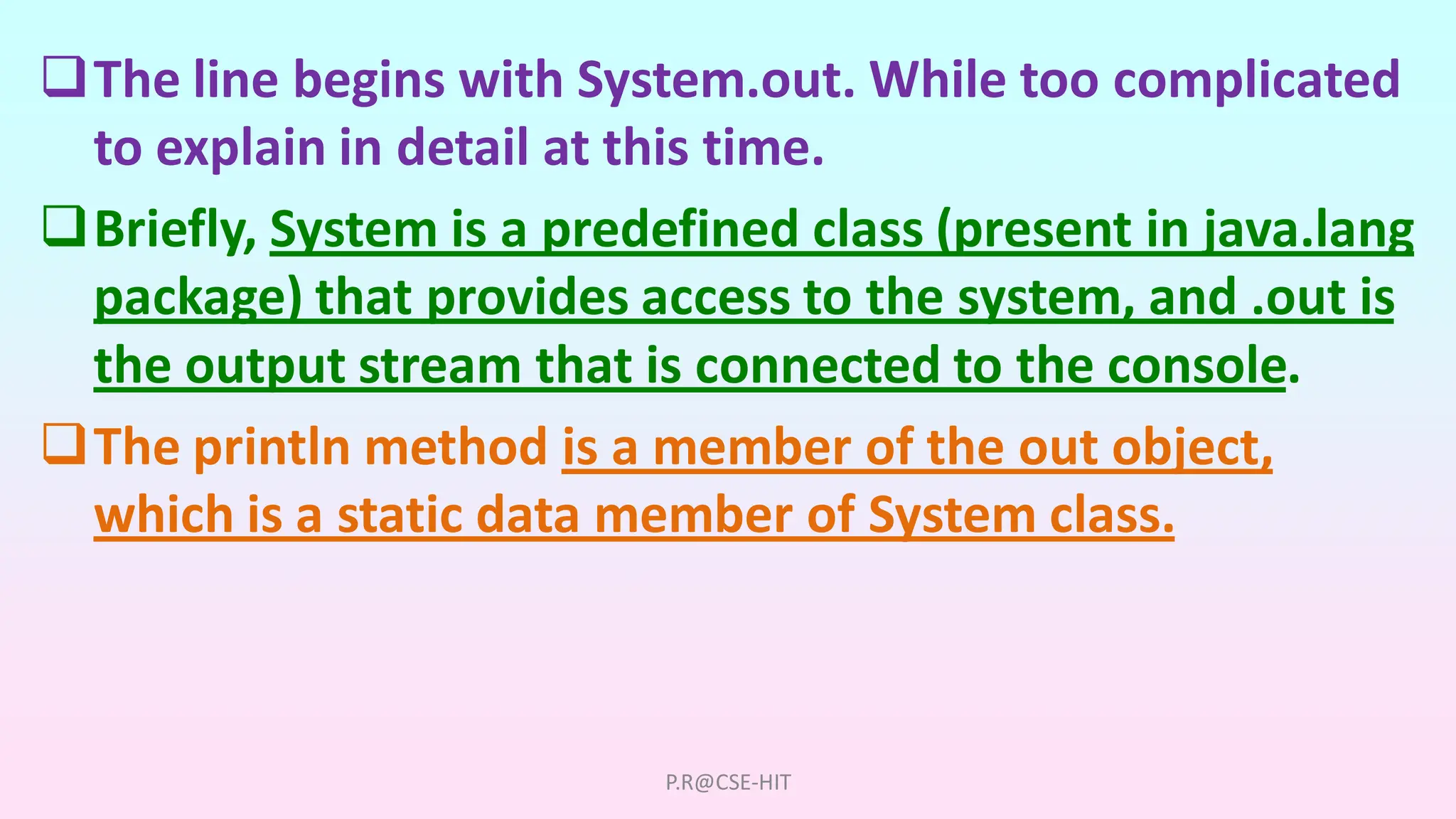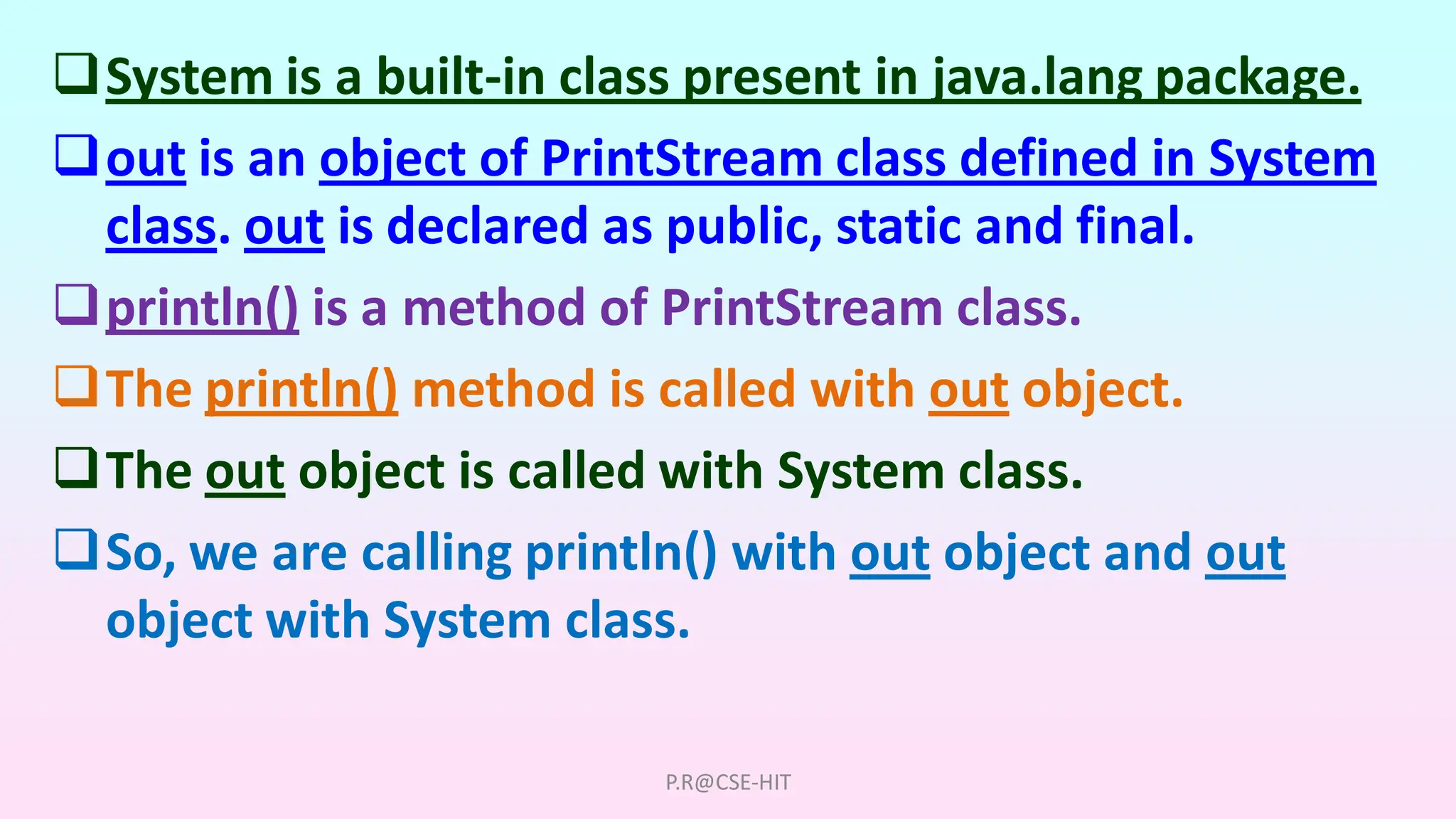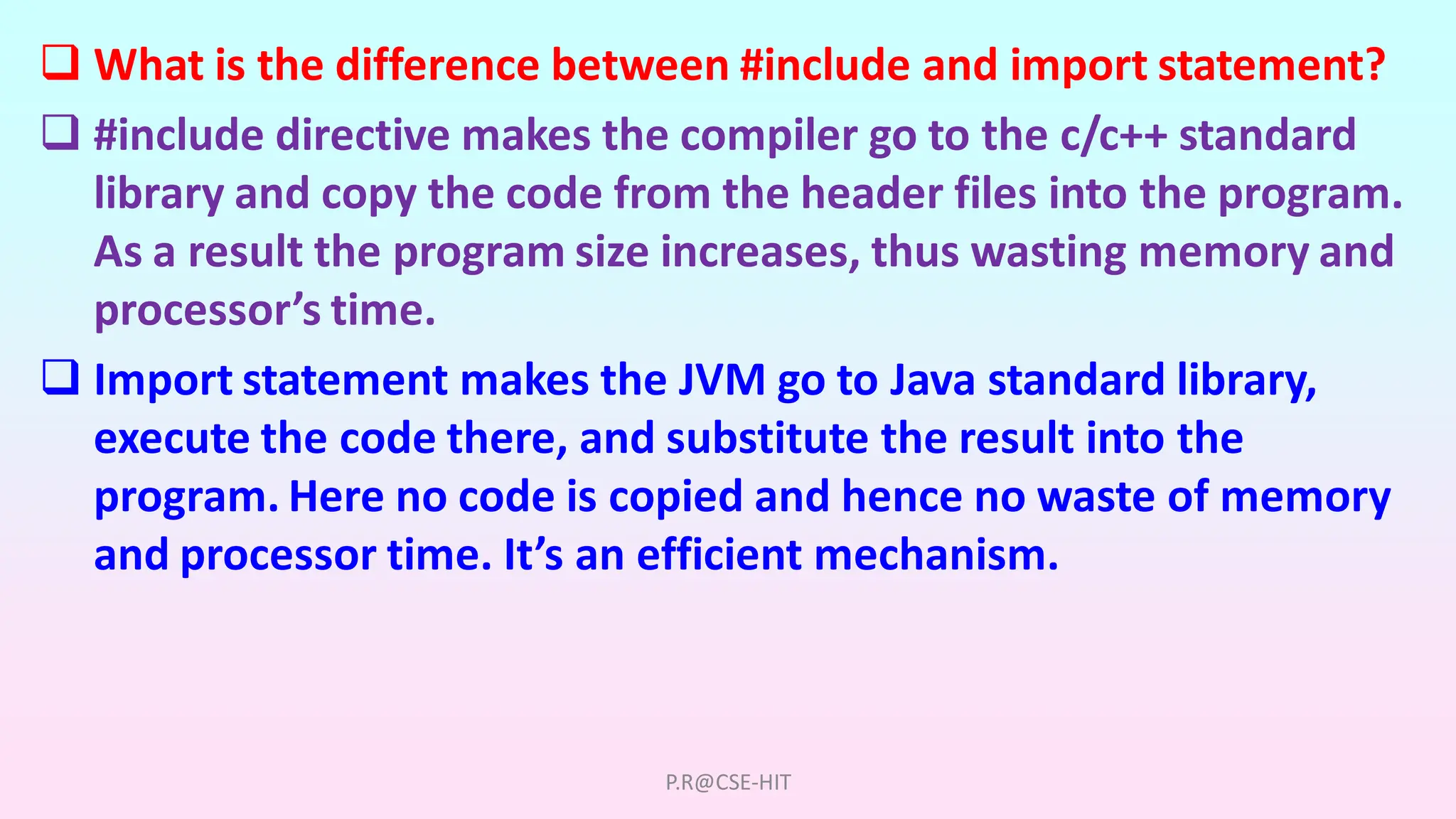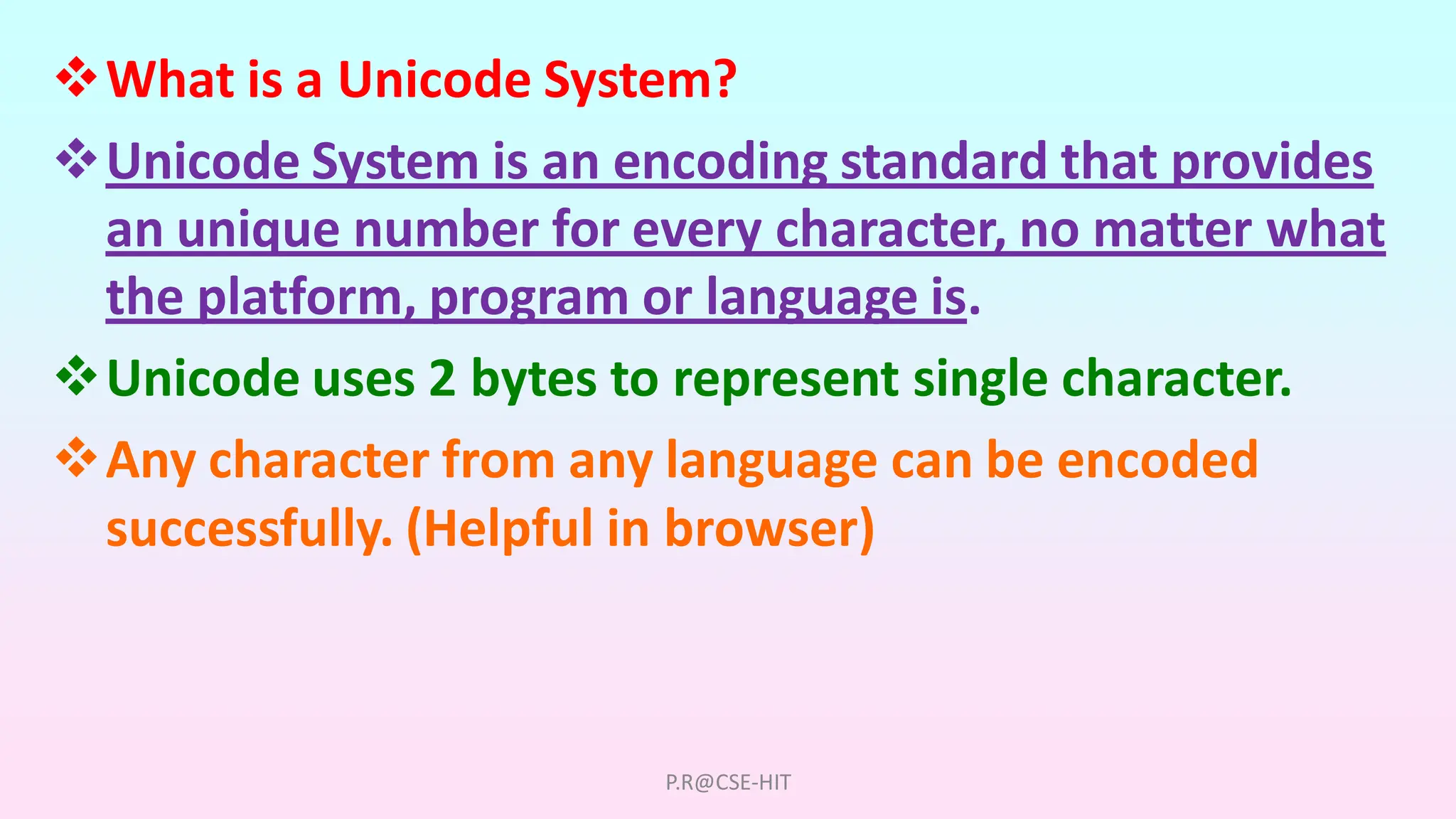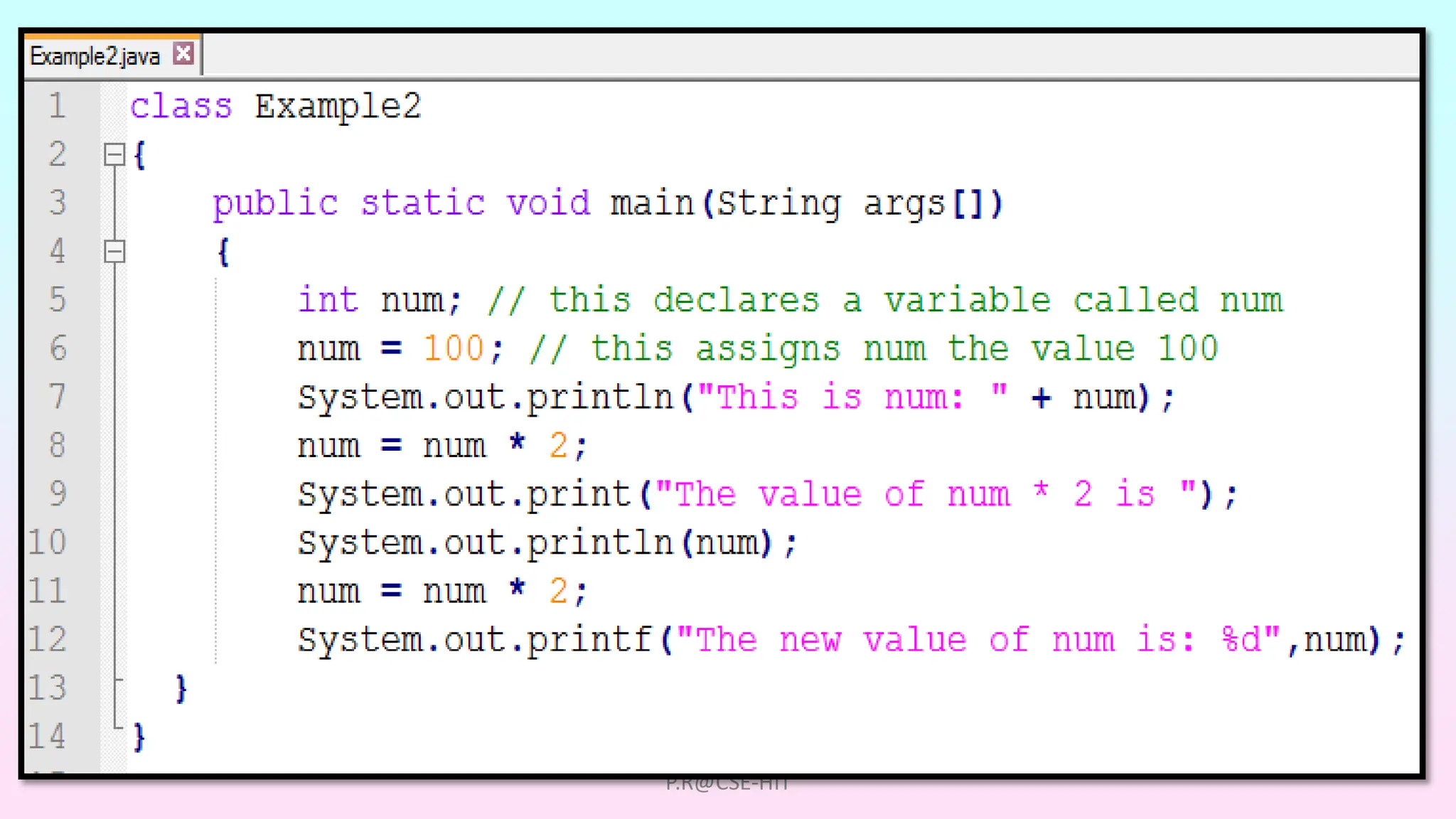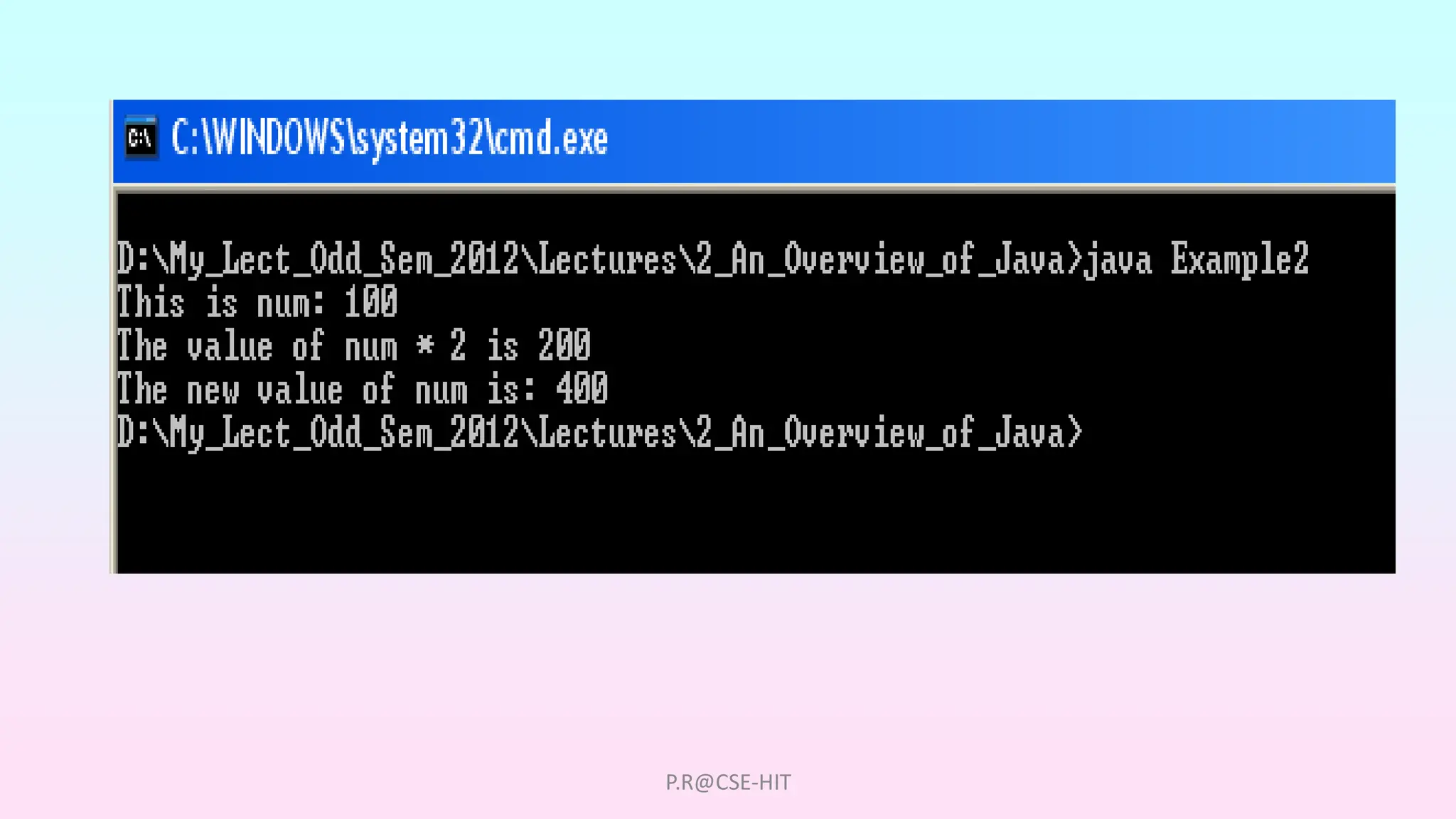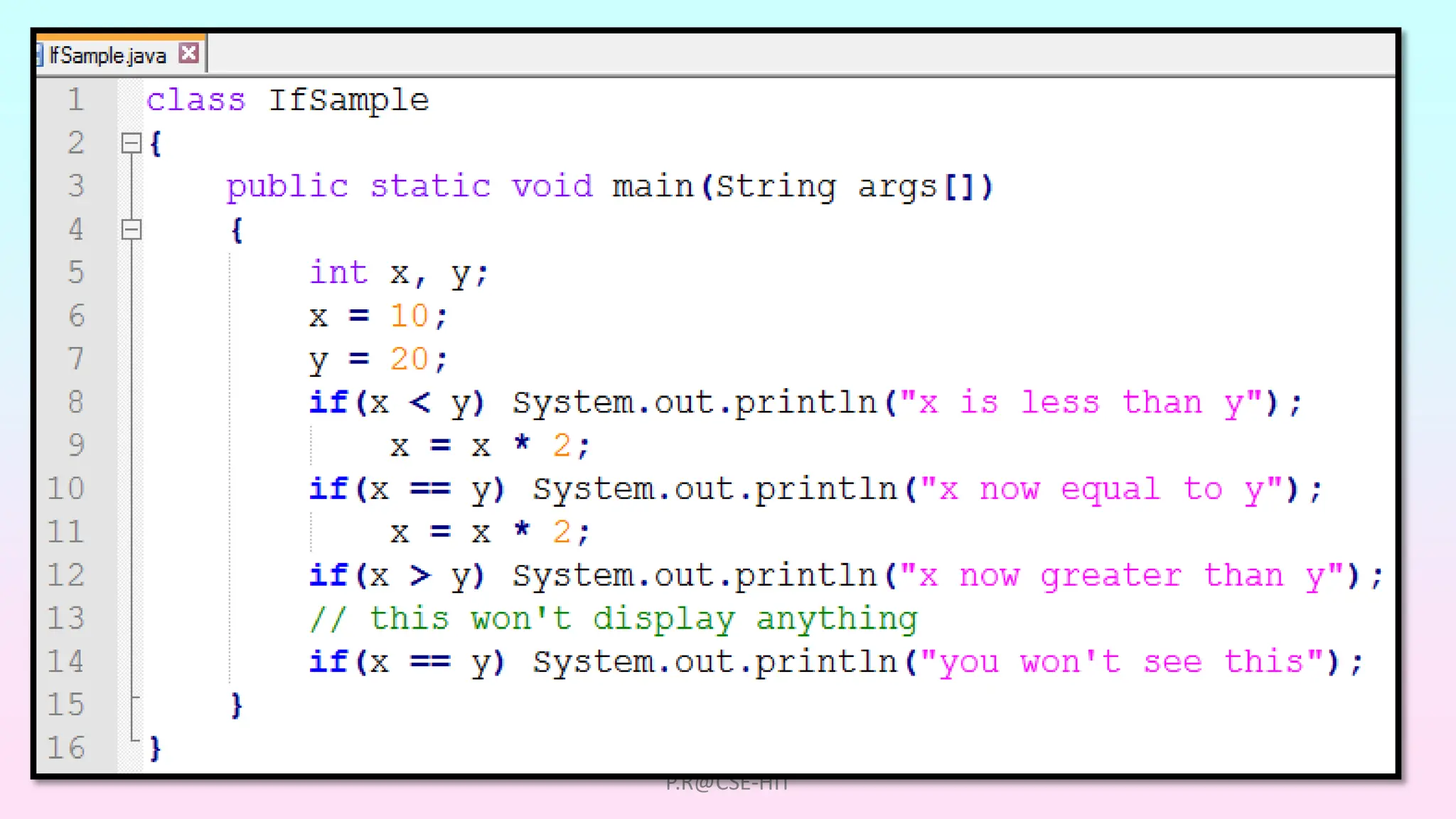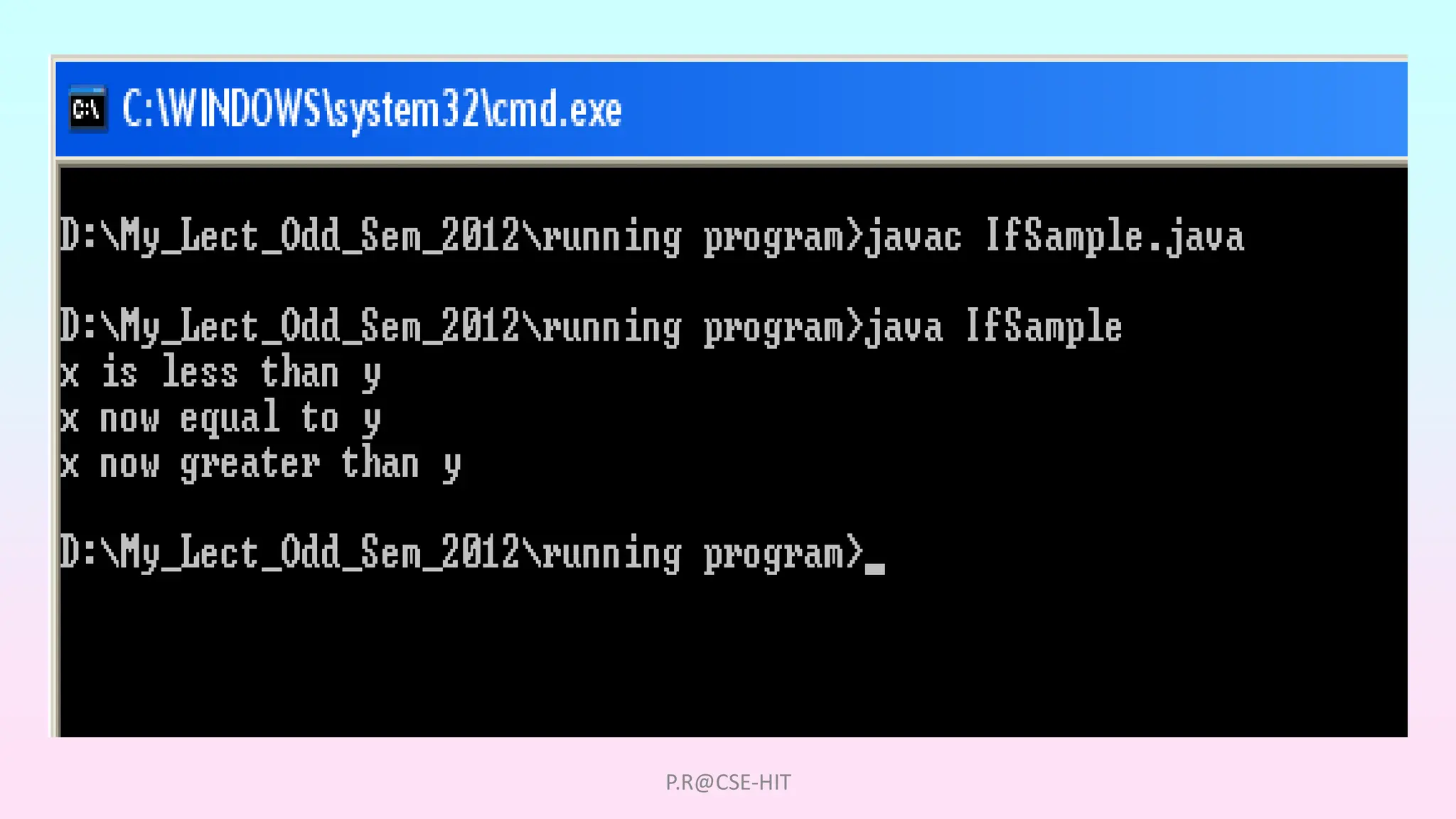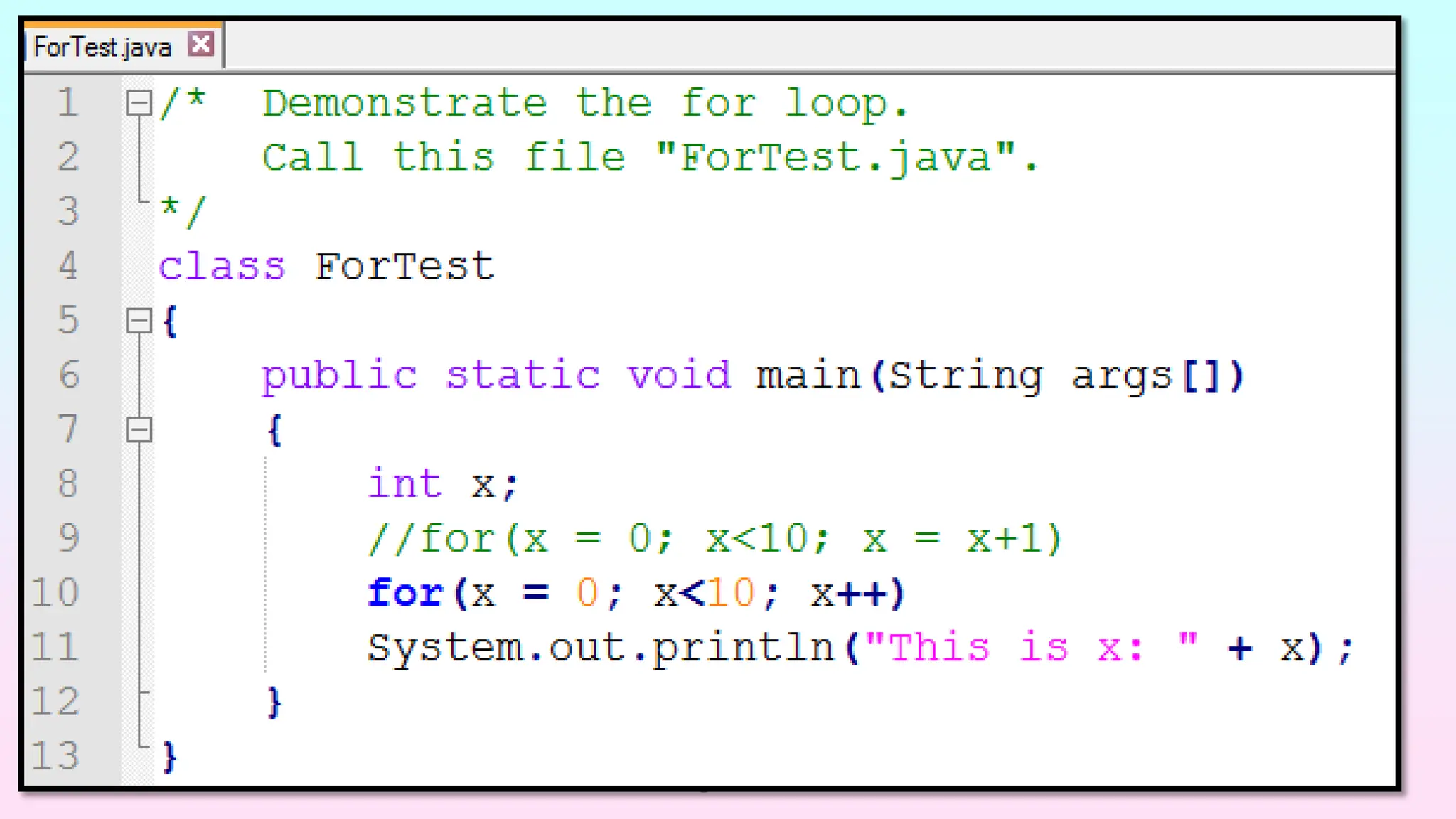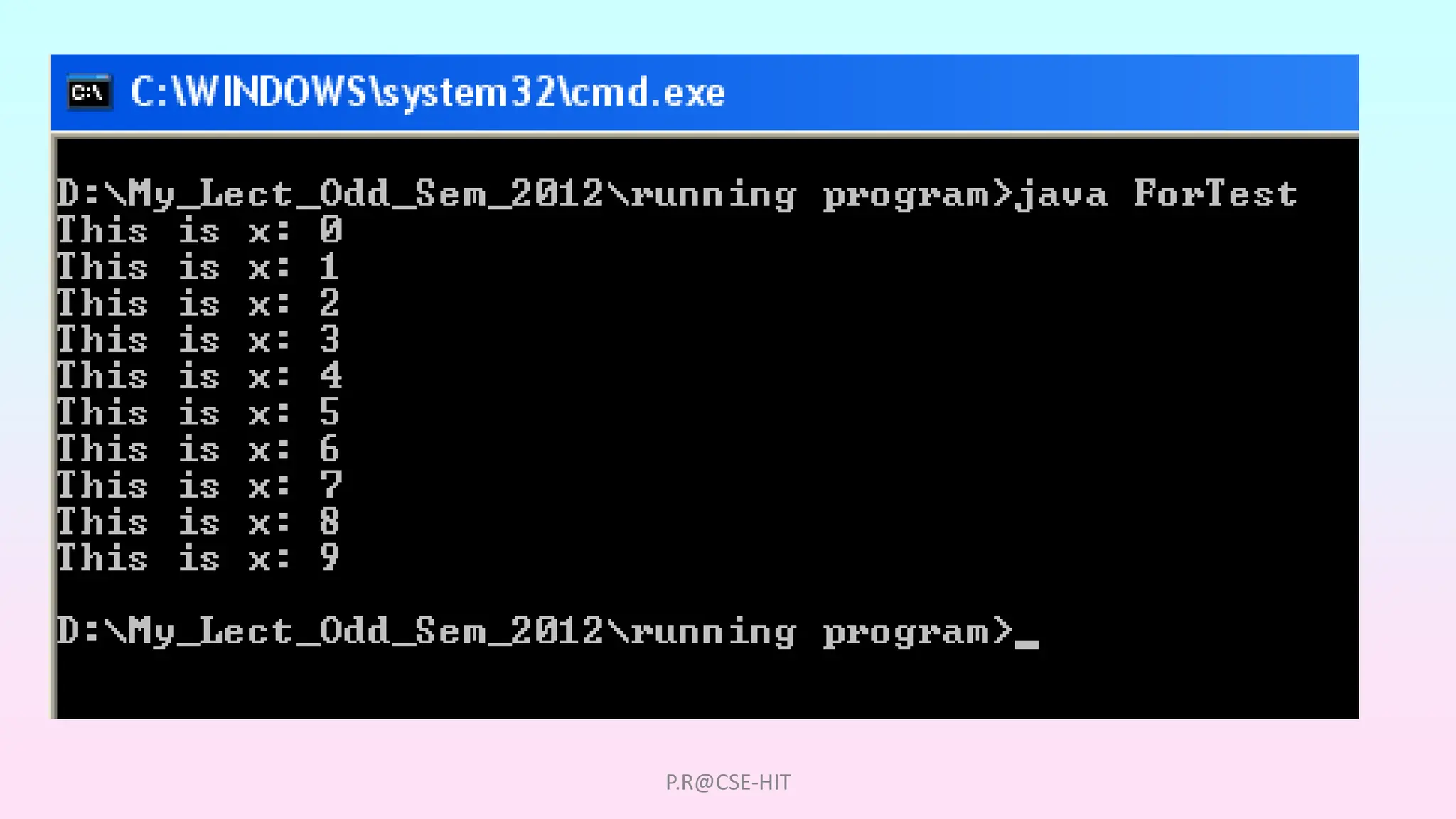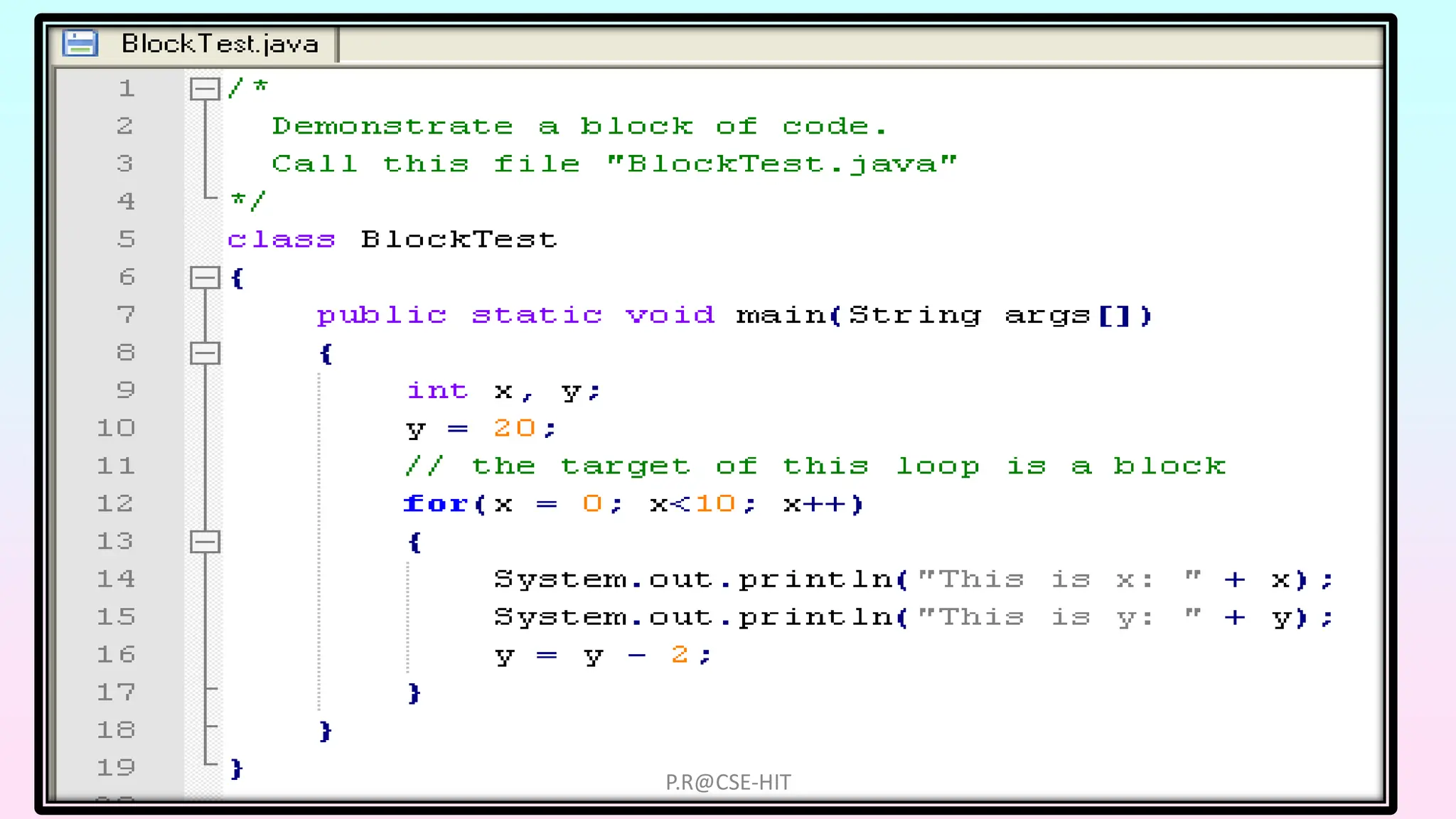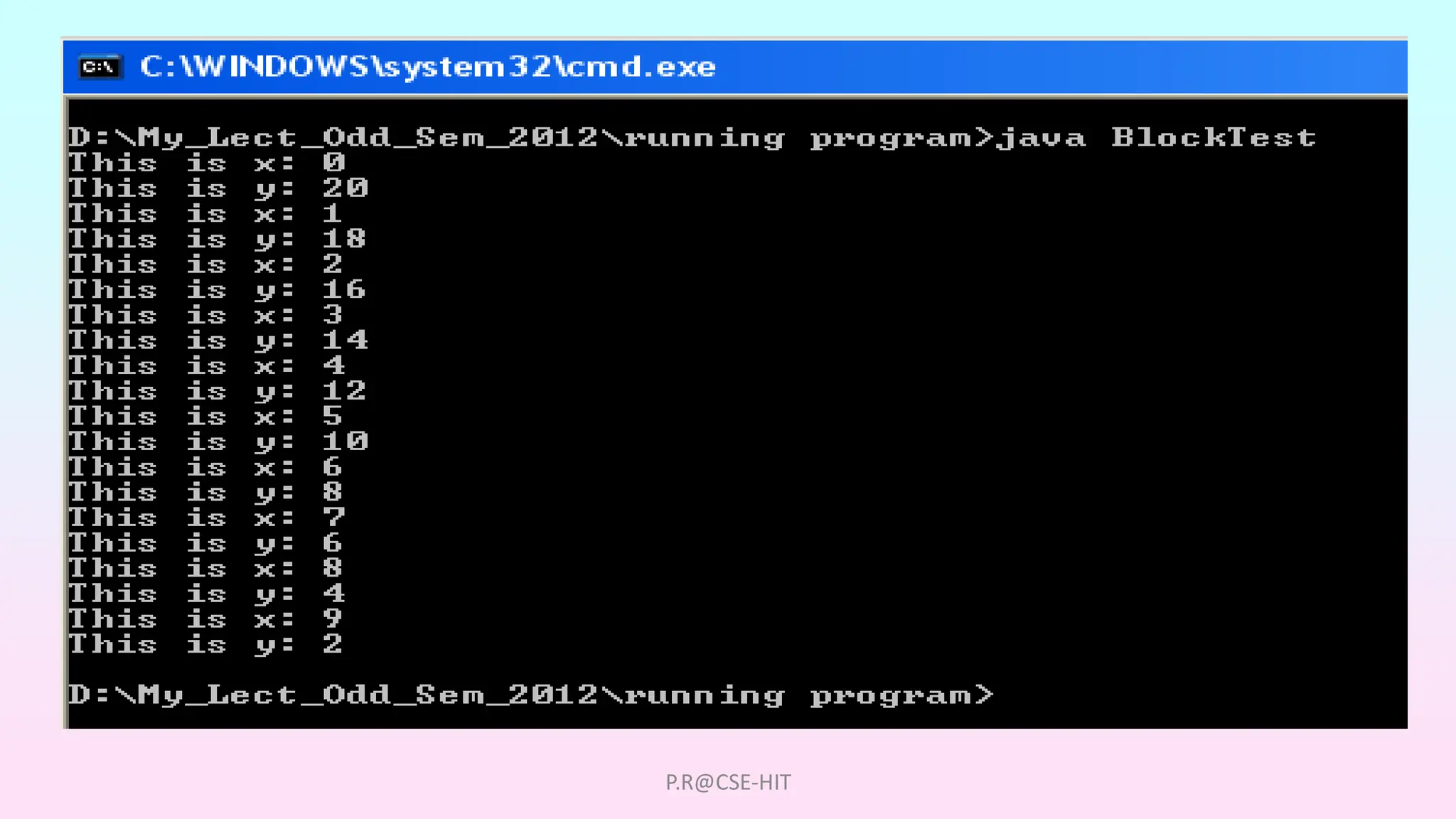The document provides an overview of Java and its object-oriented programming (OOP) principles, emphasizing that all Java programs are inherently object-oriented. It details the structure of a simple Java program, including compiling and executing the program, and explains key components of the 'main' method, such as public, static, and void keywords. Additionally, it compares the import statement in Java to the #include directive in C/C++ and introduces the concept of the Unicode system for character encoding.
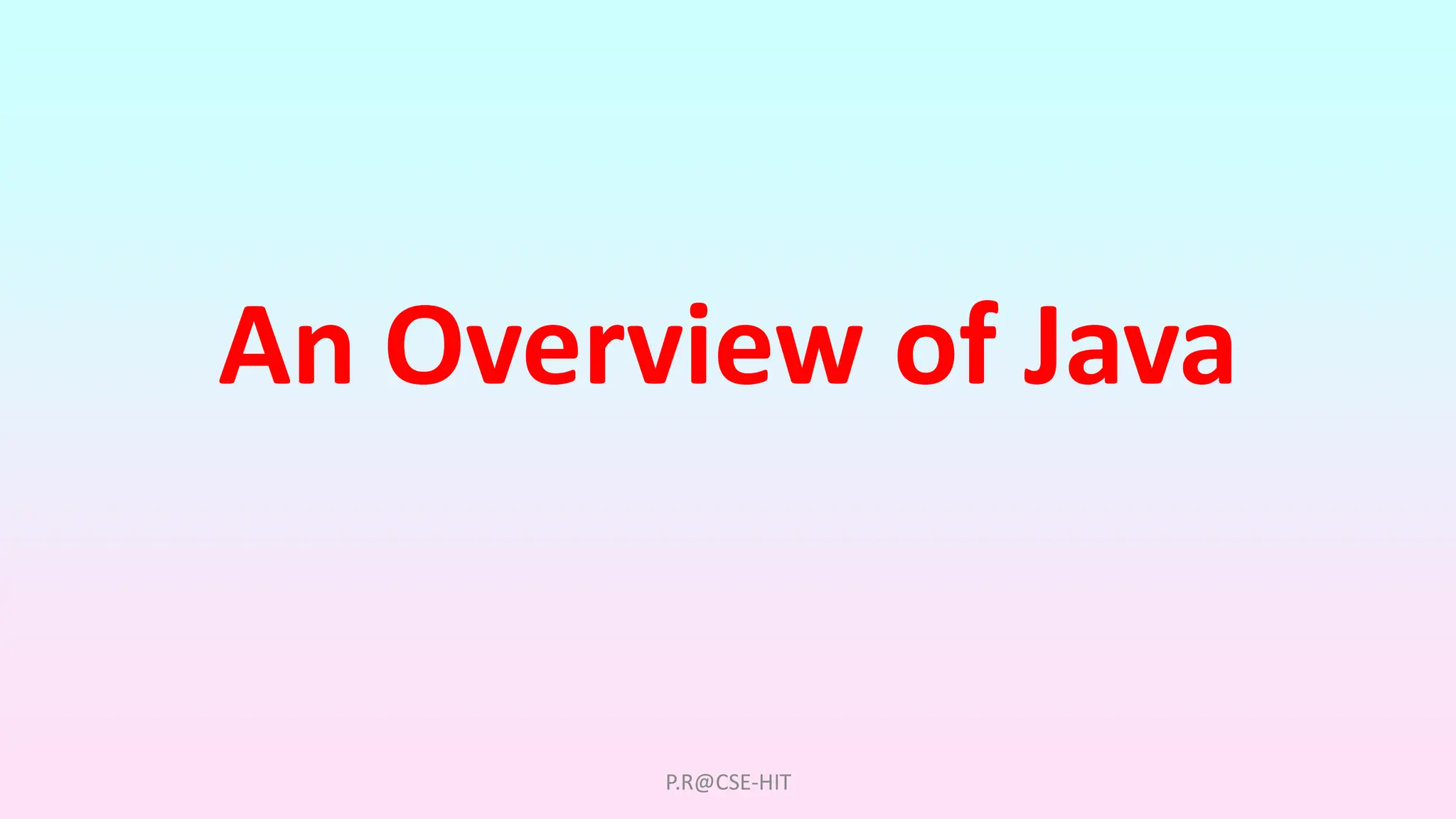
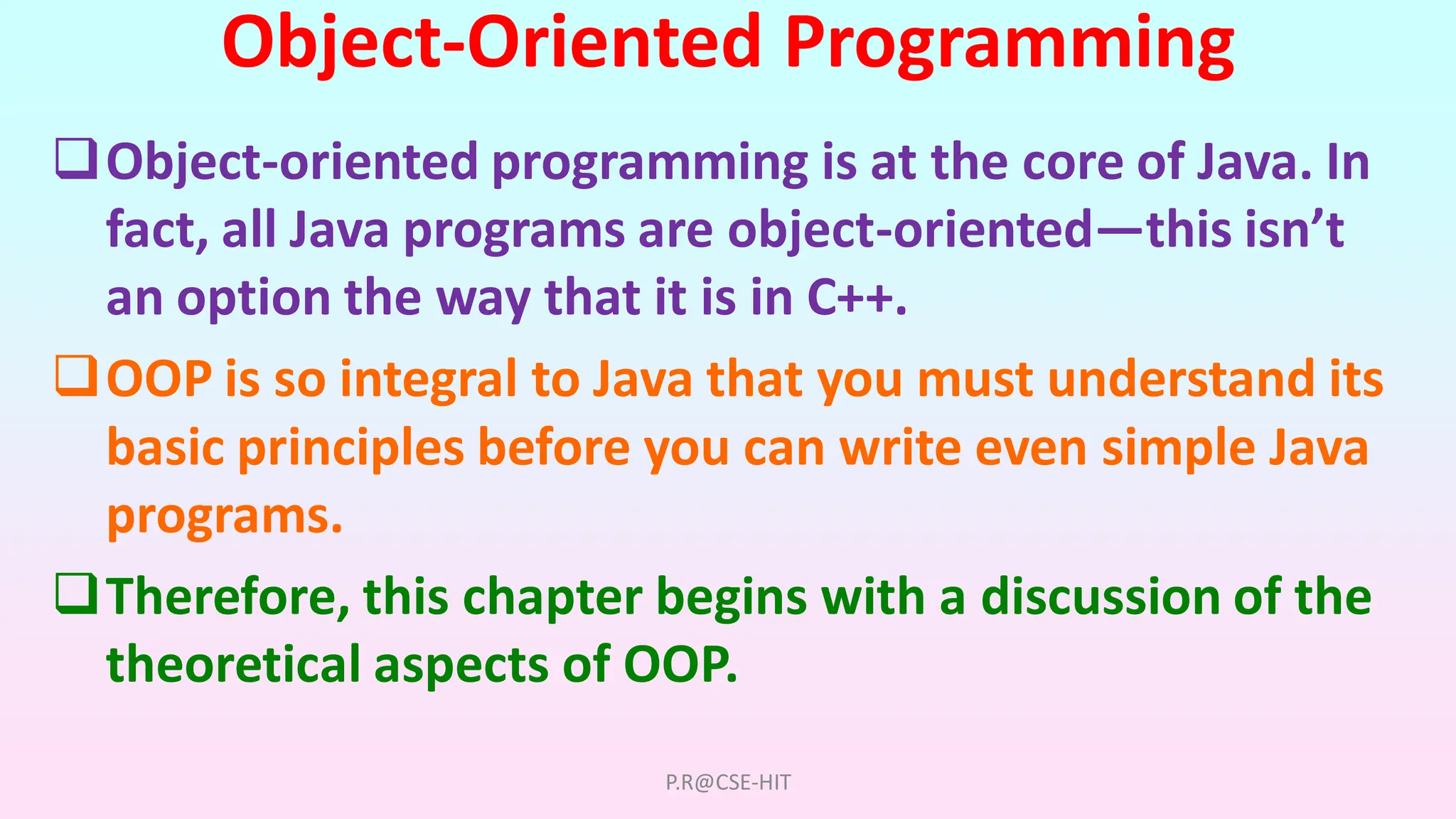
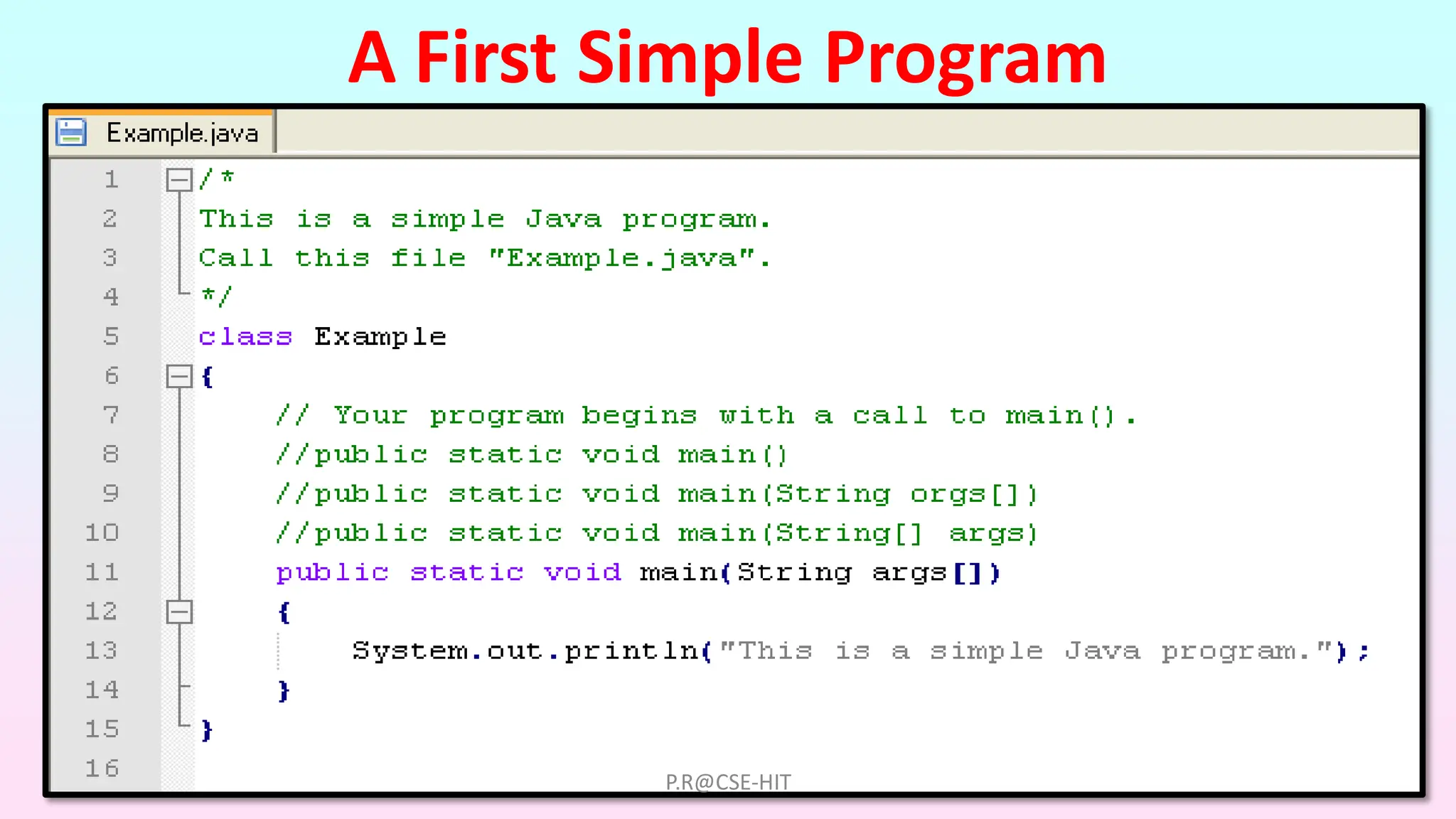
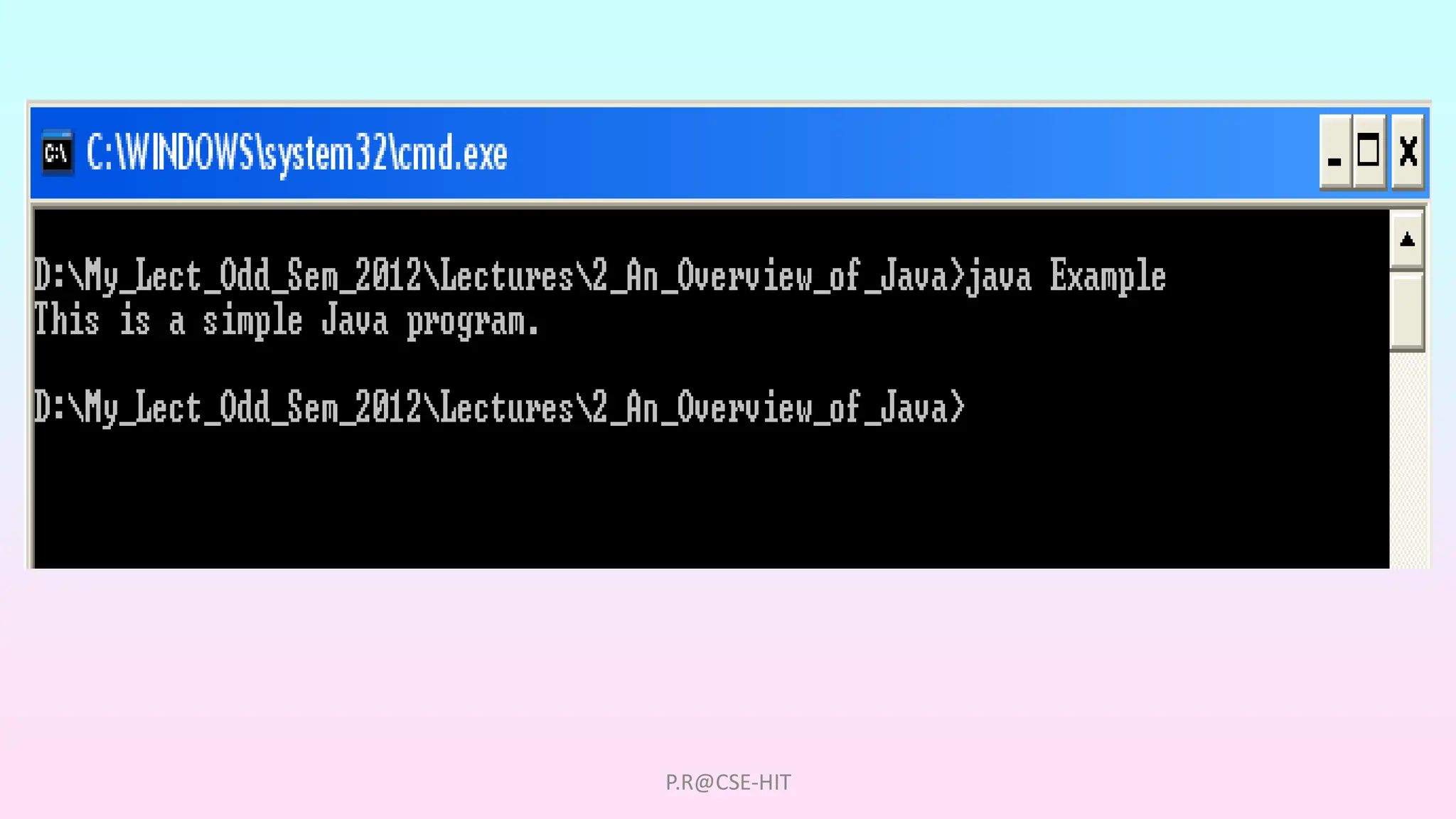
![public static void main()
public static void main(String orgs[])
P.R@CSE-HIT](https://image.slidesharecdn.com/chapter2anoverviewofjava-240602160647-c0c018aa/75/An-Overview-Of-Java-Object-Oriented-Programming-5-2048.jpg)
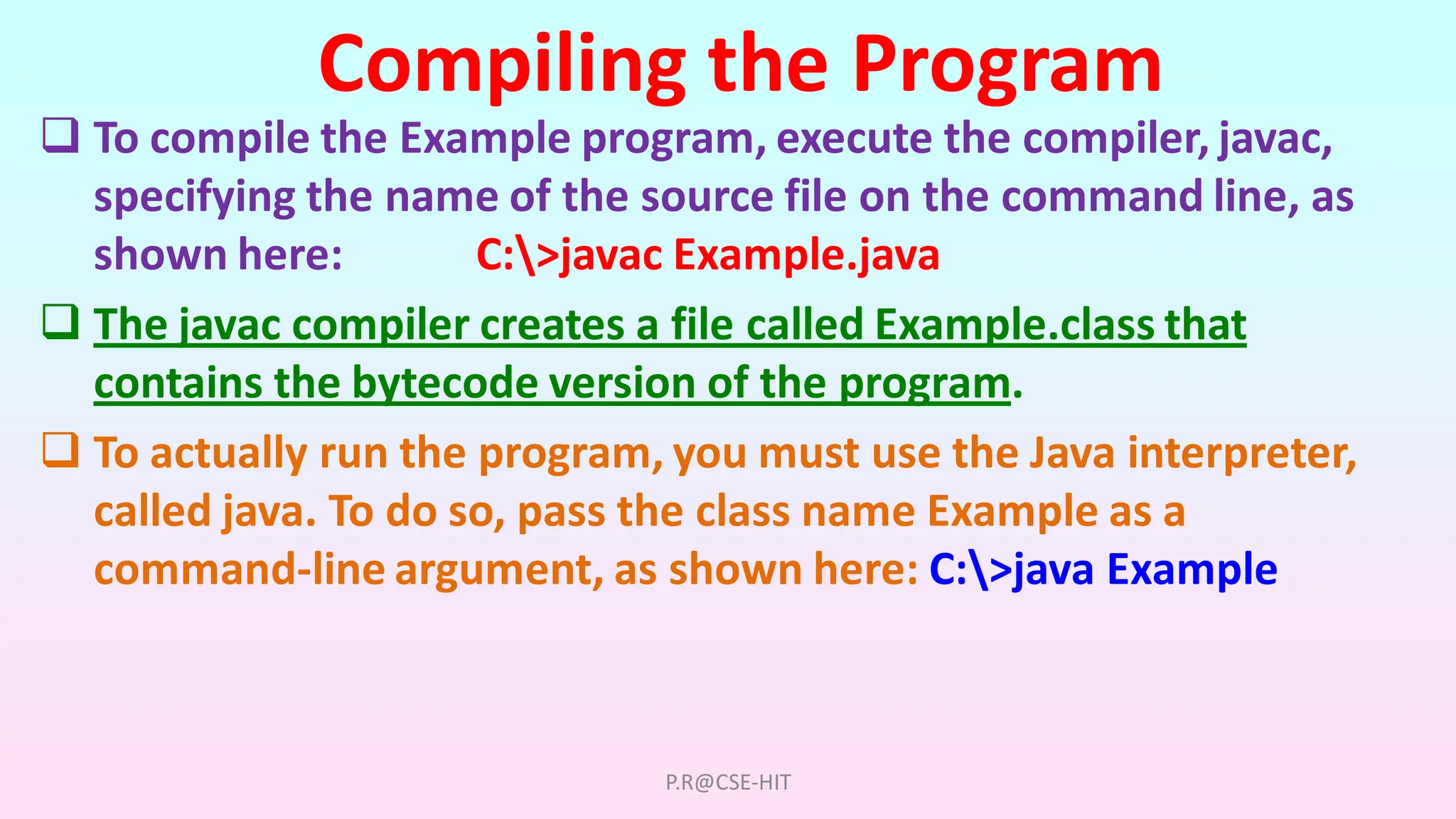
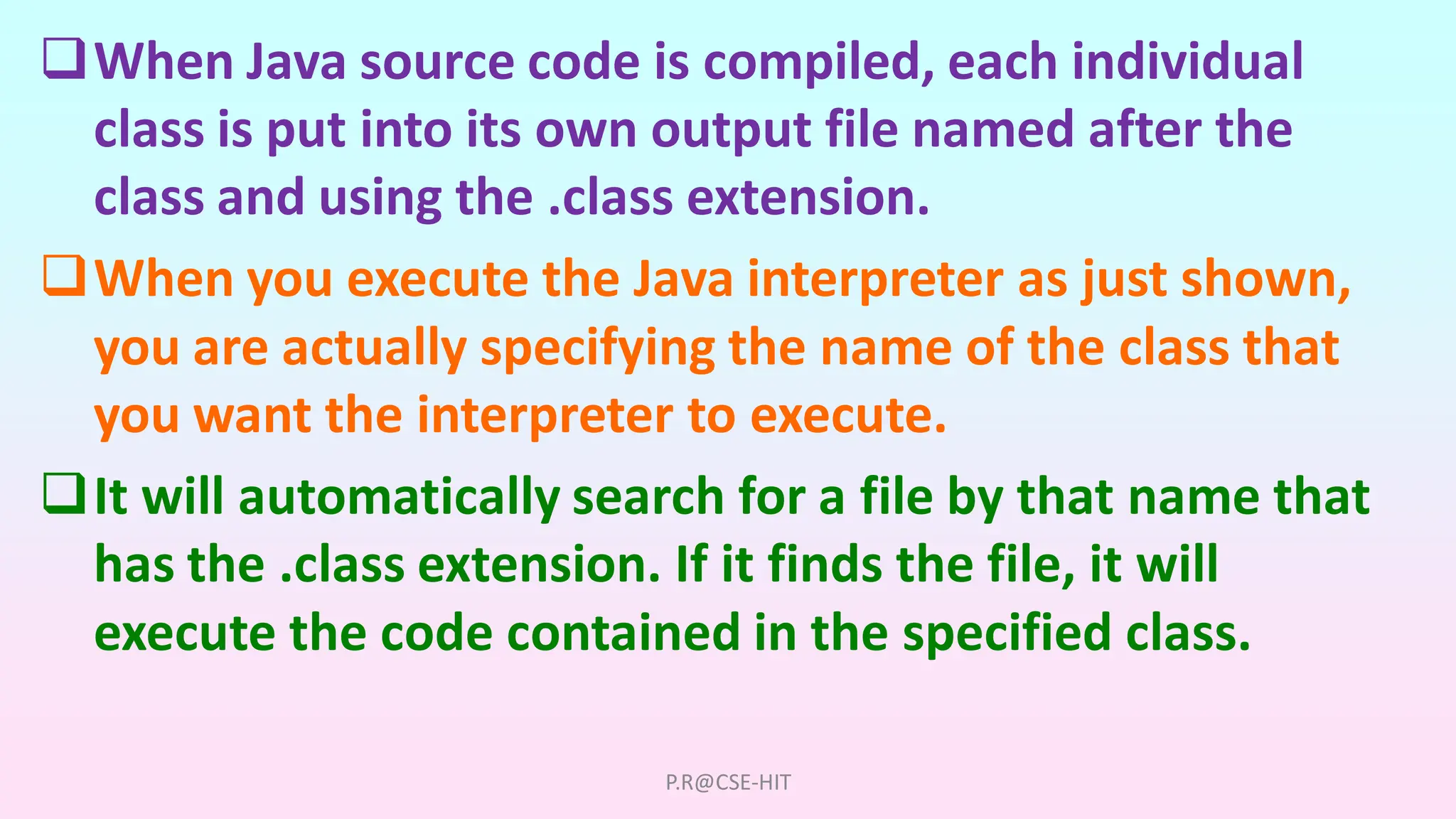
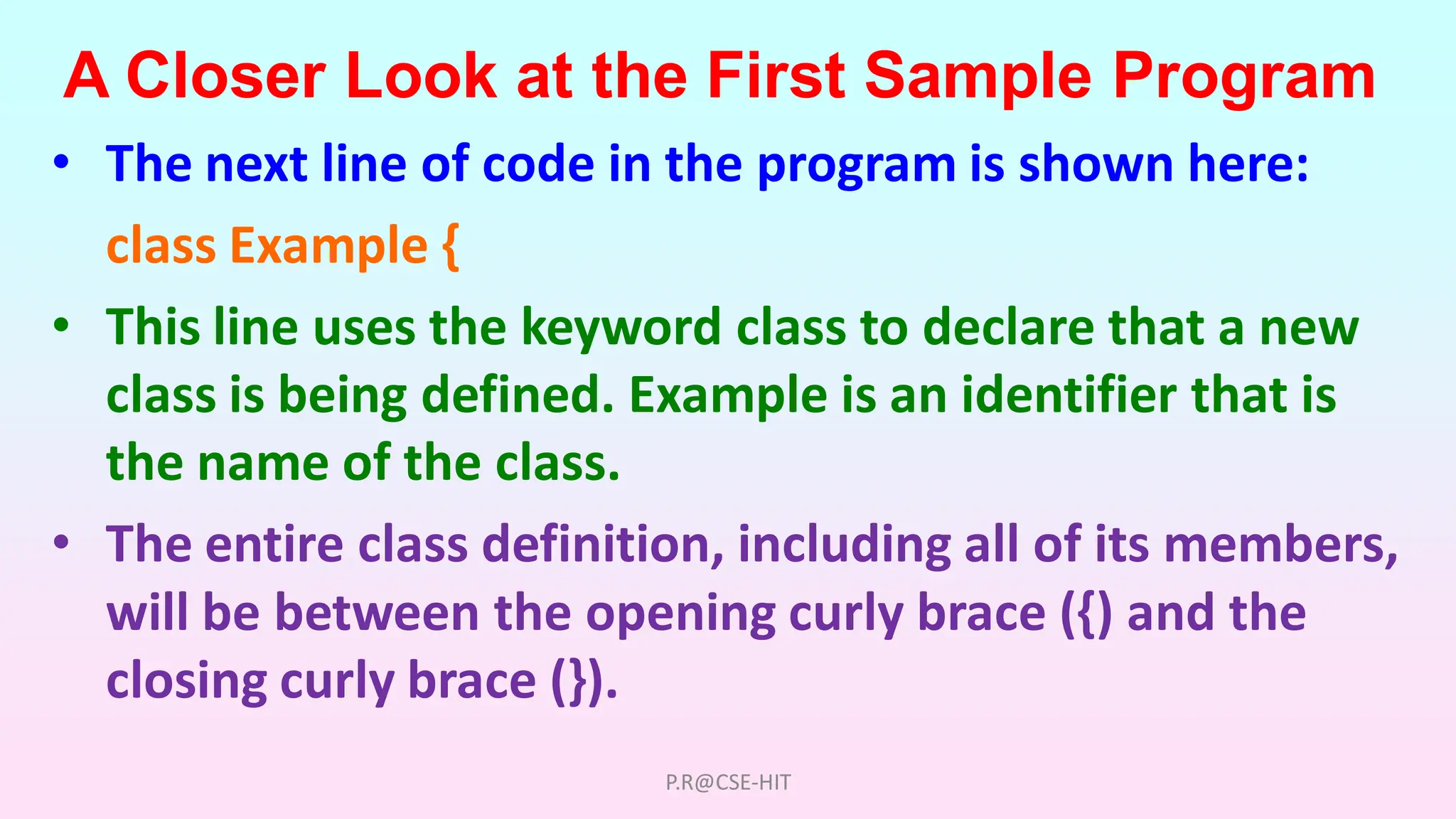
![ The next line of code is shown here:
public static void main(String args[]) { }
• What is public?
• What is static?
• What is void?
• What is main()?
• What is String?
• What is args[]?
P.R@CSE-HIT](https://image.slidesharecdn.com/chapter2anoverviewofjava-240602160647-c0c018aa/75/An-Overview-Of-Java-Object-Oriented-Programming-9-2048.jpg)
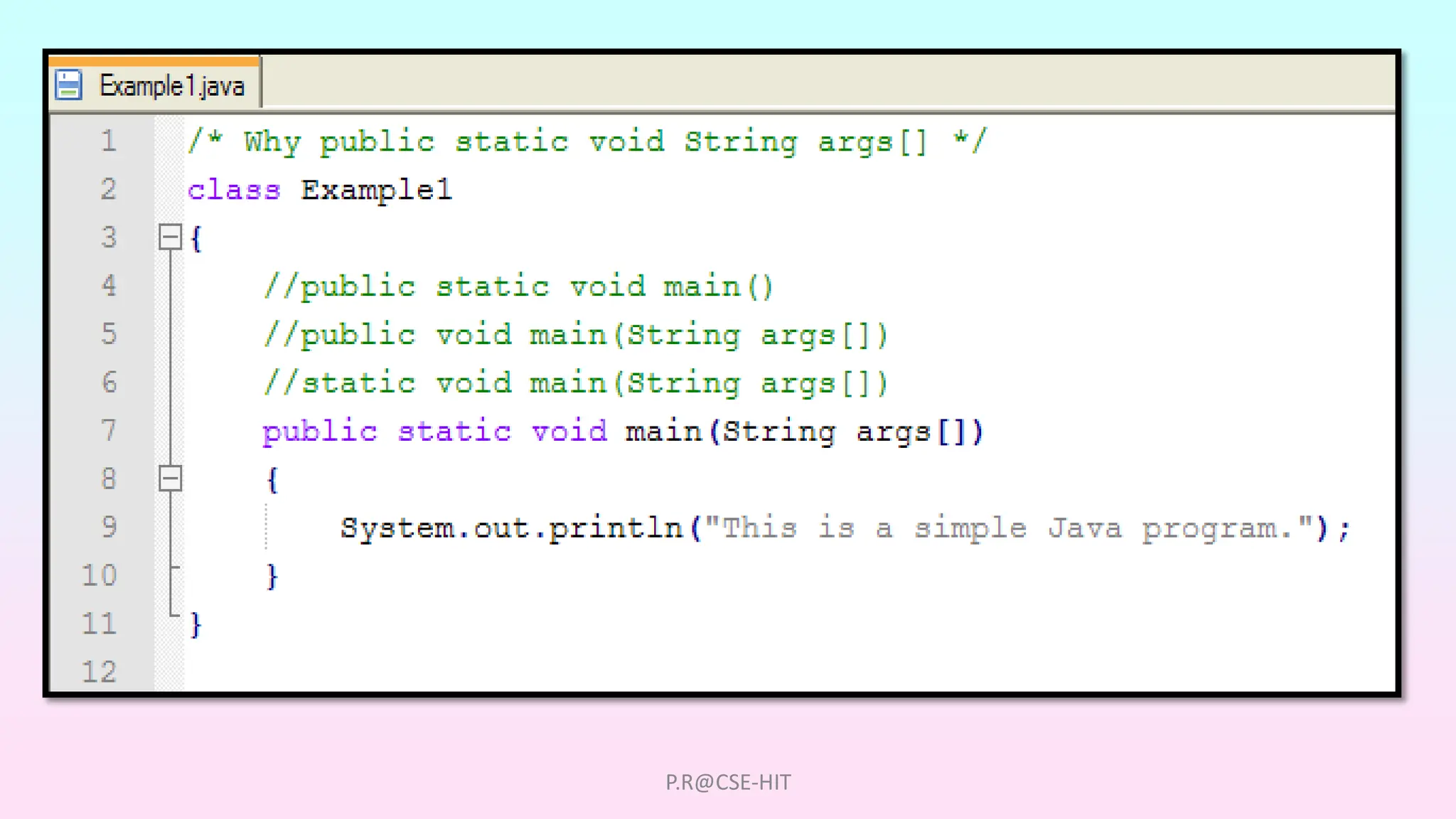
![When we are writing only :- public static void main()
When we are writing only :- public static void main(String orgs[])
P.R@CSE-HIT](https://image.slidesharecdn.com/chapter2anoverviewofjava-240602160647-c0c018aa/75/An-Overview-Of-Java-Object-Oriented-Programming-11-2048.jpg)
![When we are writing only :- static void main(String args[])
When we are writing only :- public void main(String args[])
P.R@CSE-HIT](https://image.slidesharecdn.com/chapter2anoverviewofjava-240602160647-c0c018aa/75/An-Overview-Of-Java-Object-Oriented-Programming-12-2048.jpg)
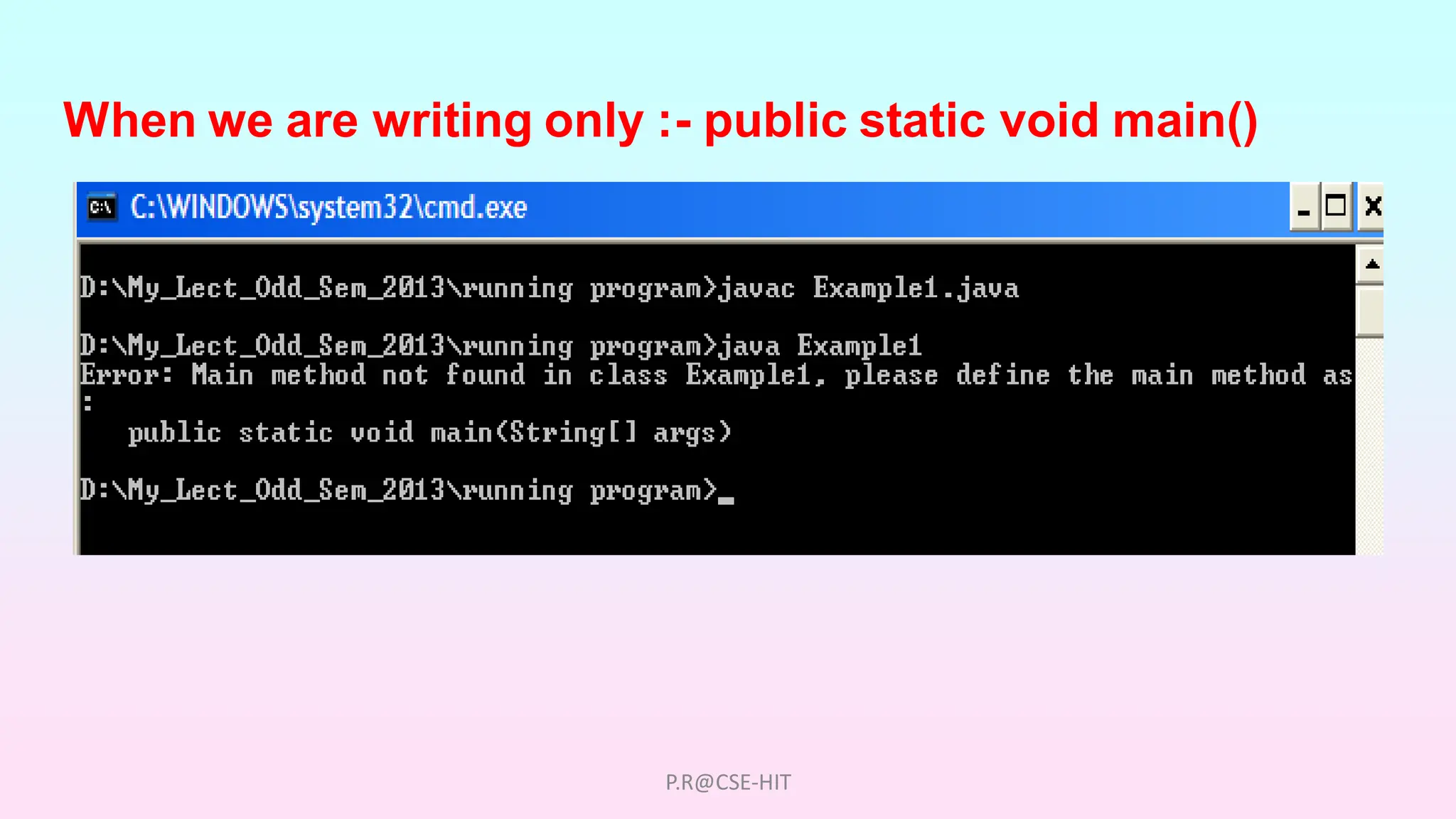
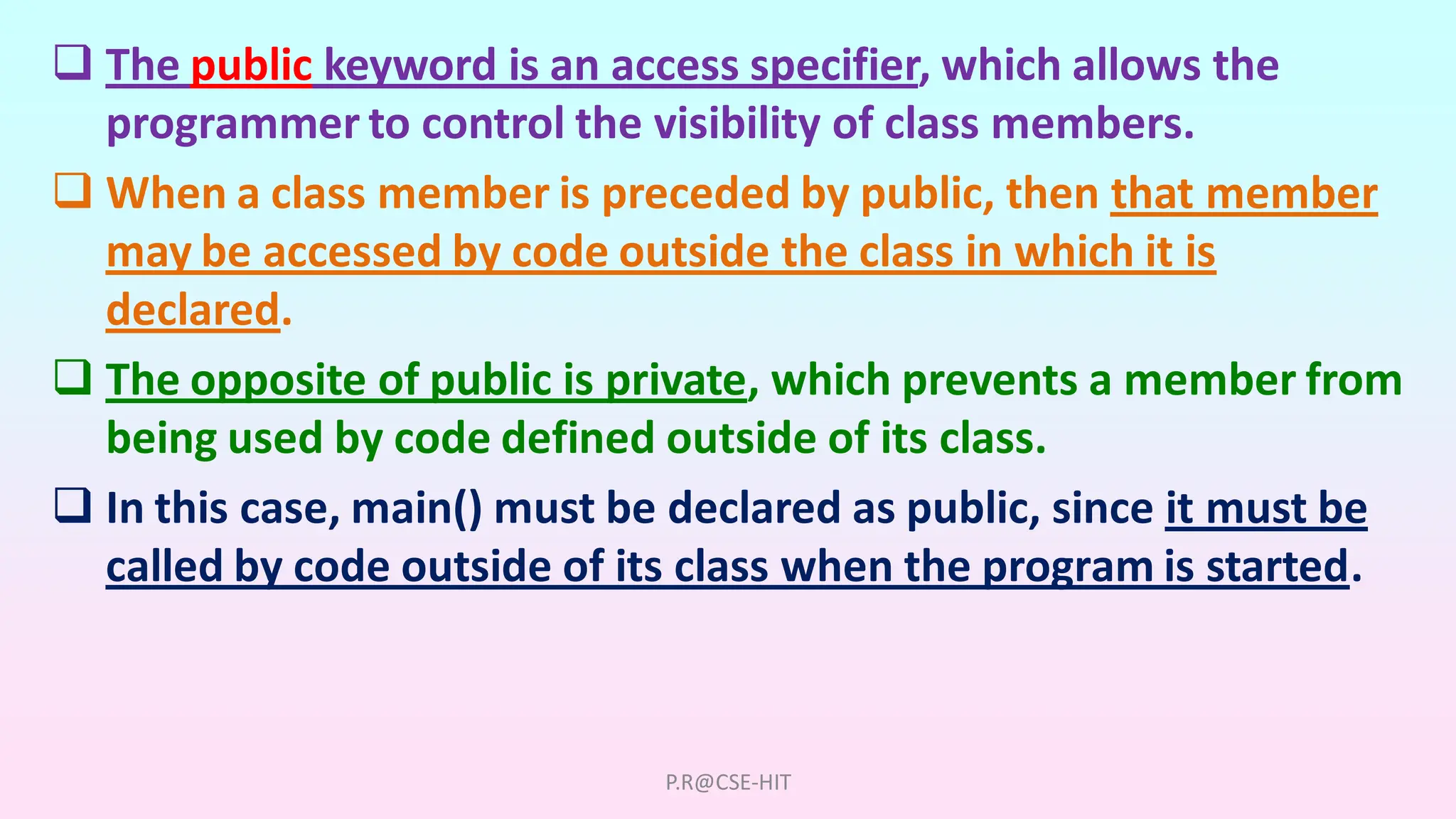
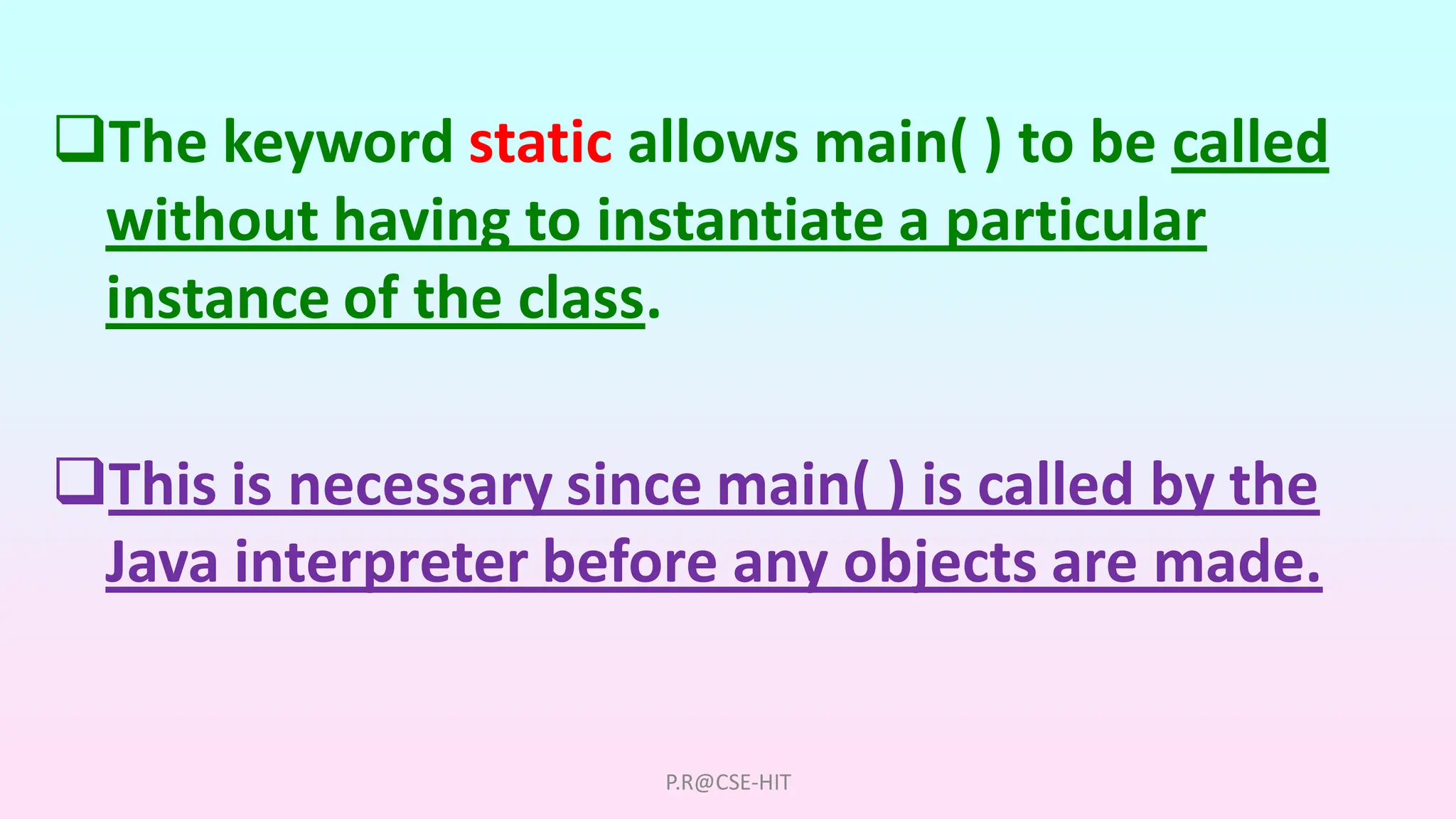
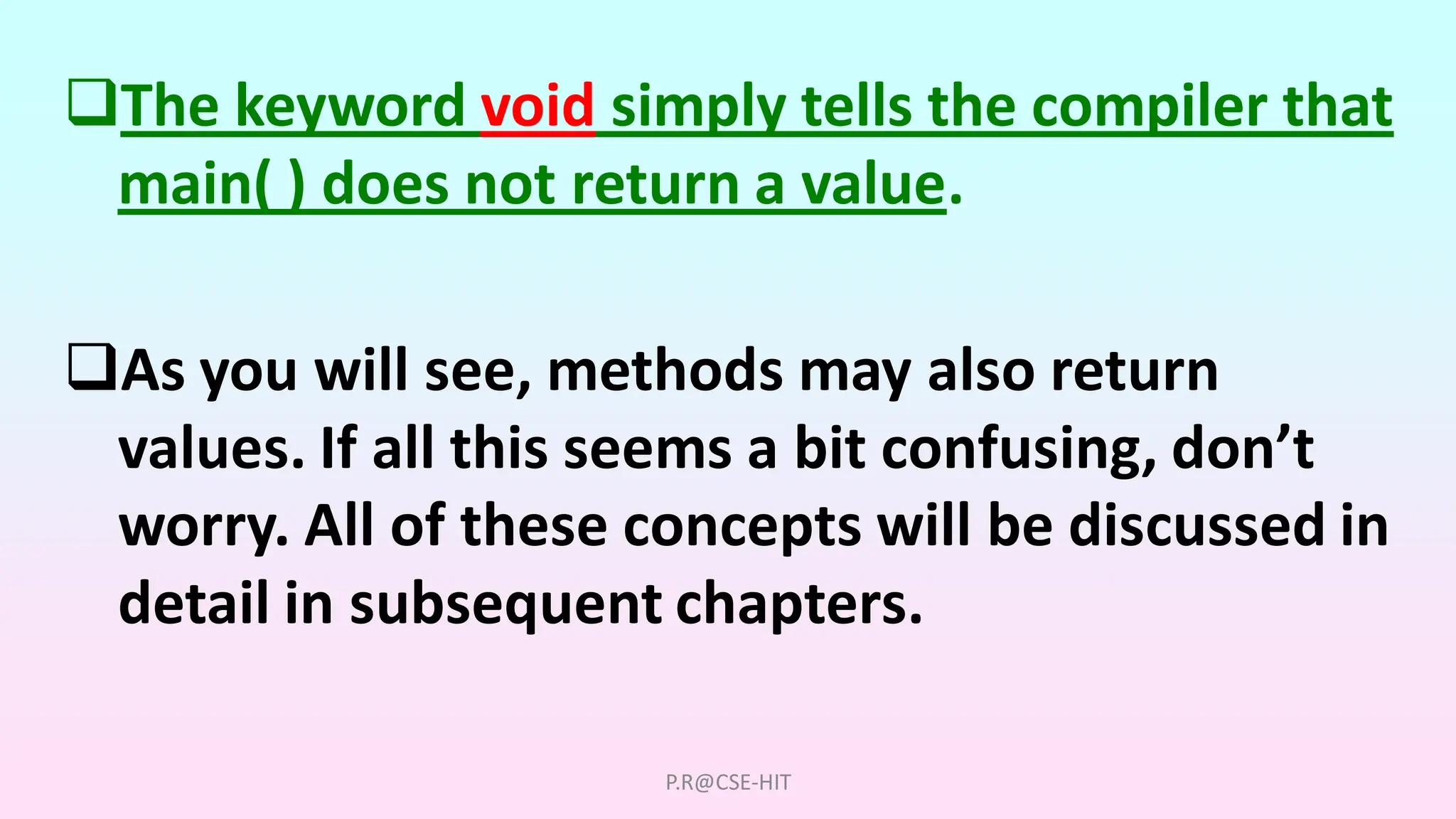
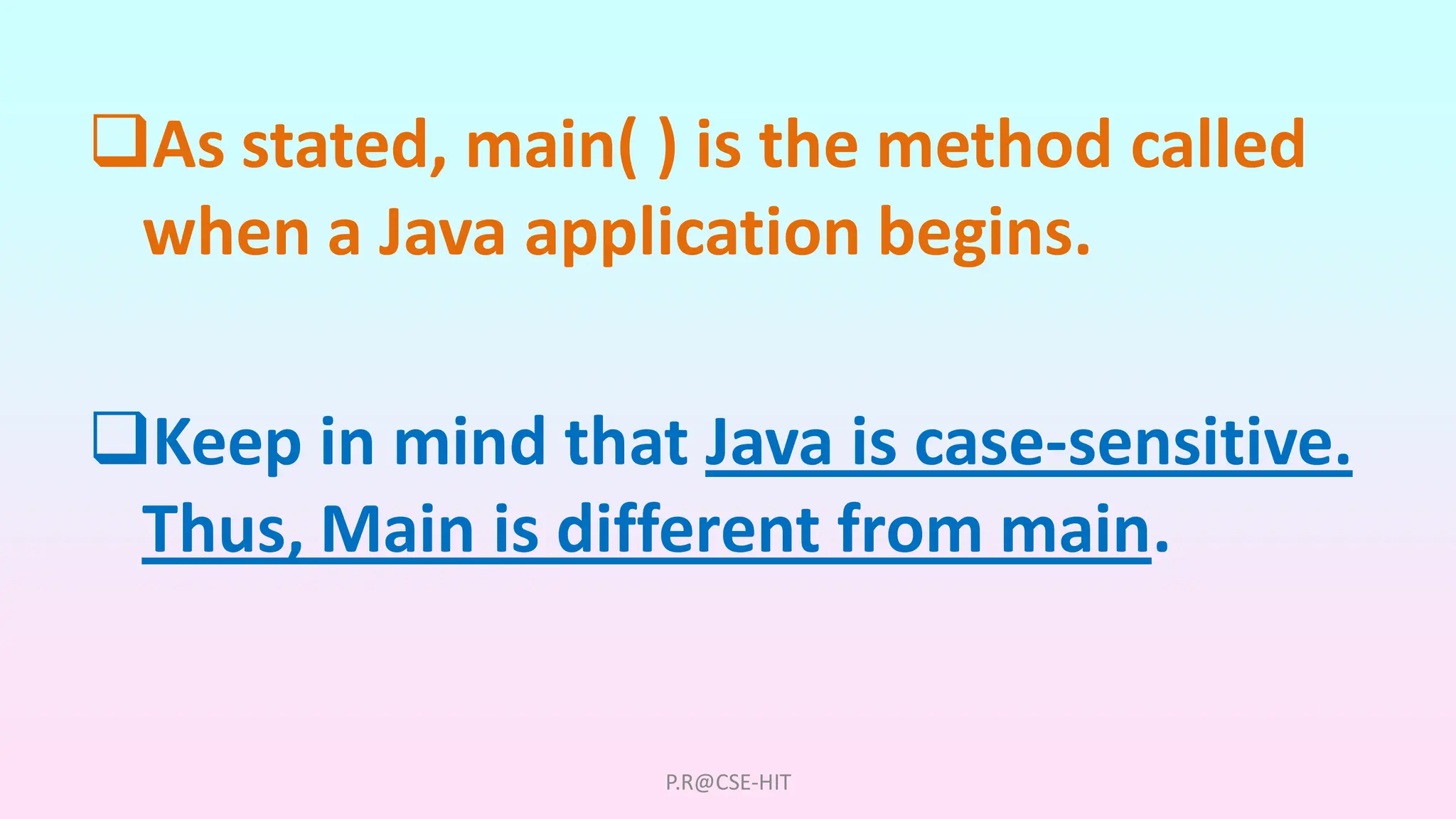
![In main( ), there is only one parameter, albeit a
complicated one.
String args[ ] declares a parameter named args, which
is an array of instances of the class String. (Arrays are
collections of similar objects.)
Objects of type String store character strings.
In this case, args receives any command-line
arguments present when the program is executed.
P.R@CSE-HIT](https://image.slidesharecdn.com/chapter2anoverviewofjava-240602160647-c0c018aa/75/An-Overview-Of-Java-Object-Oriented-Programming-18-2048.jpg)
